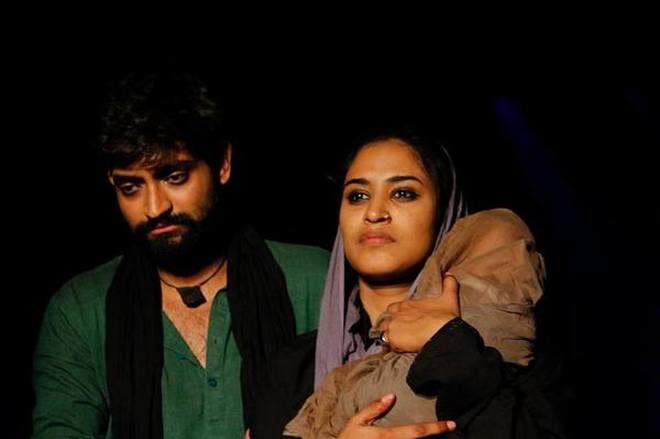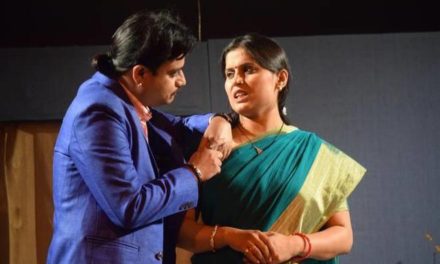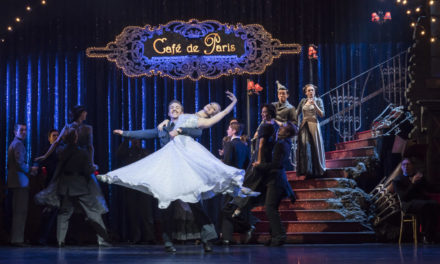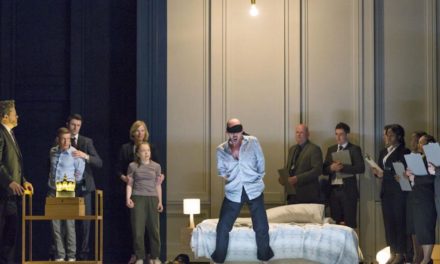Kanchan Ujjal Singh’s adaptation of Amrita Pritam’s popular novel, Pinjar, does justice to the content and context of the times it is set in.
An adaptation of Amrita Pritam’s celebrated novel Pinjar presented by LTG Repertory this past week at its auditorium brought alive vividly the social turmoil and the traumatic torture inflicted on women by their abductors in the wake of the Partition. A renowned poetess and fiction writer of Punjabi, Amrita Pritam’s novel Pinjar, written in 1950, is considered a definitive work on the tragedy. It was adapted into Hindi film of the same title, which won National award for Best Feature Film on National Integration.
The play under review is directed by young artist Kanchan Ujjal Singh with sensitivity, offering to the audience horrifying images of sexually exploited, mentally and emotionally shattered women with no hope of redemption, highlighting the appalling reality of the suffering of women in the time of social turmoil unleashed by religious fanatics. However, in a subtle way the production projects towards the close that at the densely dark tunnel there exists a ray of hope for humanity to overcome the morbid desire for revenge to inflict senseless violence on innocent people.
Set in the house of a well-to-do family in the rural landscape of Punjab, the play opens on a happy note. The head of the family is Mohan Lal, a rich farmer who is pleased with himself. His elder daughter Puro will be married to Ramchand, the dignified son of a rich landlord respected by his farm workers and neighbors for his benevolence. The happiness of Puro as the daughter-in-law of a rich landlord is assured. Her mother, younger sister, and a bevy of young village girls in their beautiful attires sing folk songs and dance on the eve of marriage of Puro to express their joy and youthful exuberance. The entire atmosphere is steeped in romantic fervor. The director has aesthetically conceptualized these scenes infusing them with vibrancy and lyrical quality. But suddenly it is transformed into a horrifying atmosphere and a pal of gloom, anxiety, and terror prevails in the house of Mohan Lal. Puro is kidnapped by a young Muslim boy, a sordid act of family revenge.
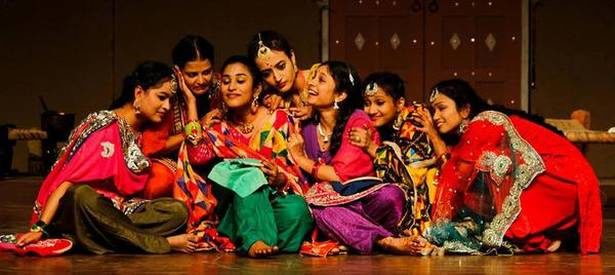
Post Partition
An unmitigated catastrophe engulfs the entire rural and urban landscape which is now declared Pakistan. Hindus and Sikhs are leaving the area to go to India. To protect the minorities from armed fanatics, they are asked to gather at a camp. Some young people possessed by satanic forces kidnap young women from these camps. One of such victims is, the younger sister of Puro. Her kidnapper is Javed, an embodiment of devil. Then the narrative moves forward to capture slices of the operation of repatriation of abducted women both in India and Pakistan with kith and kin to receive their abducted and lost women in the wake of the Partition.
The novel is adapted by the director herself which follows the linear pattern of the novel. The unfolding of the storyline tends to drag at places. Some pruning of the stage version would have made the production tight and reduced the playing time which lasted two and a half hours. But the horrific tale of violence against women continued to hold the attention of the packed house.
One of the highlights of the production is innovative set jointly designed by Nitin Sharma and Pradeep Chahar which creates the required ambiance of the house of a rich farmer with hectic preparations to solemnize the marriage of the daughter in full swing. A large plank is used to create the bridge between the downstage of the proscenium and the steps leading to the main entrance to the auditorium. This device creates the illusion of fields where the dramatically most significant act of kidnapping of Puro takes place. It is also used by the abductor to ride a bicycle, providing several points of the exit and entry to dramatis personae.
Some of the scenes are remarkable for their intense emotional power like the one where, in a frenzy, Puro enters her house in the terribly dark night after managing to free herself from the clutches of her kidnapper with cries to give her shelter. Considering her as a defiled woman she is thrown out of the house. Another skillfully enacted scene is the one where the kith and kin of abducted women have assembled to receive their recovered women. Pauses and restrained artistry are used to create a sense of suspense, hope, fear of unknown, and anxieties.
Pragya Singh Rawat as Puro gives a brilliant performance. Her character has multiple layers and shades—she is a bubbly young girl on the eve of her marriage, goes through terrifying nightmare under the clutches of her kidnapper and when she is converted to Rashida she acquires extraordinary courage and strength to liberate her sister from the captivity of her dreadful and incorrigibly alcoholic kidnapper-turned-husband. Pragya truly lives various facets of her complex character. When her Puro has the opportunity and state protection to go with her family members, who are ready to welcome her back with open arms, she politely declines the offer and walks with Rashid on the bridge beyond the border of India. Another important performance is given by Abhijit Singh as Rashid. Under family compulsion, he has to kidnap Puro but he is essentially a compassionate youth, empathizing deeply with Puro, he joins her in her mission to free her sister, winning Puro’s heart. In mass scenes, young actresses display their singing, dancing and acting talents, establishing a lively rapport with the audience.
This article originally appeared on The Hindu on December 8, 2017, and has been reposted with permission.
This post was written by the author in their personal capacity.The opinions expressed in this article are the author’s own and do not reflect the view of The Theatre Times, their staff or collaborators.
This post was written by Diwan Singh Bajeli.
The views expressed here belong to the author and do not necessarily reflect our views and opinions.

